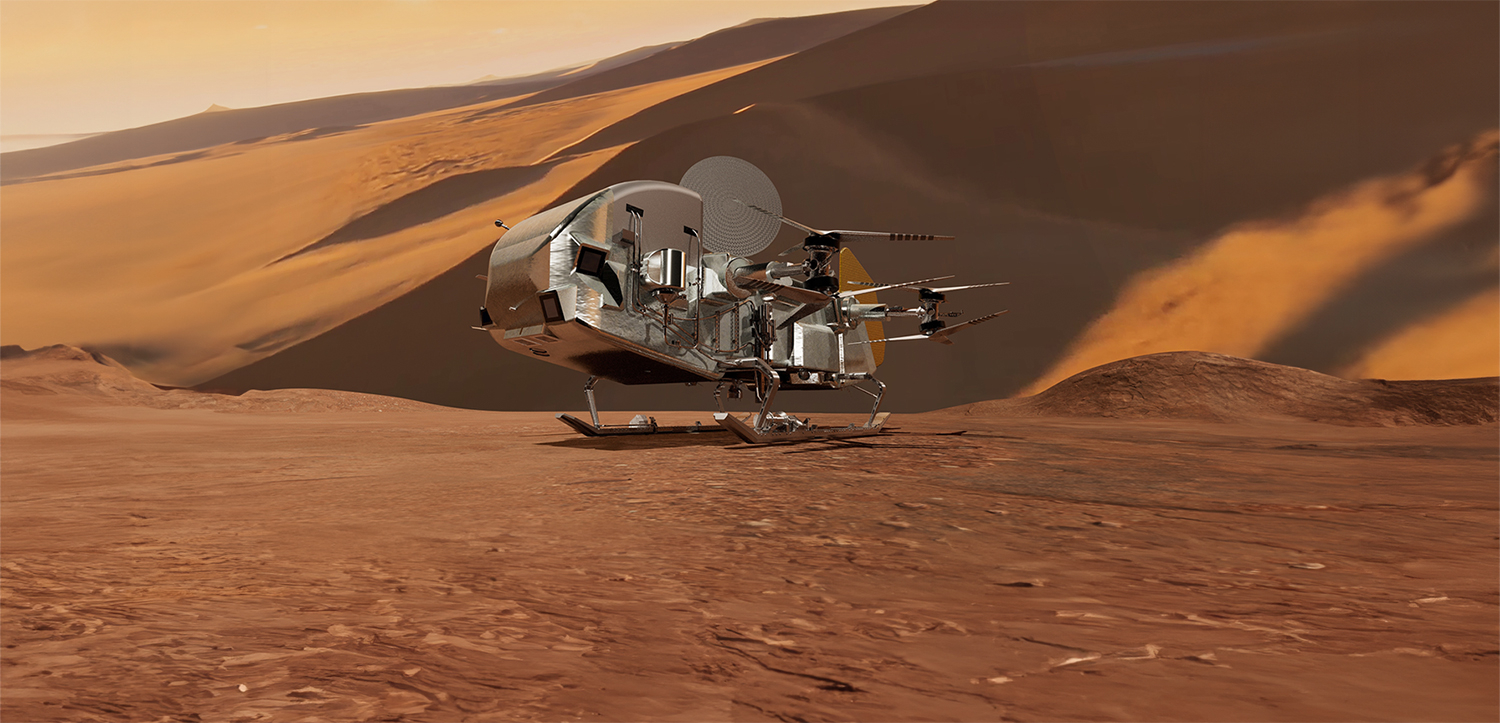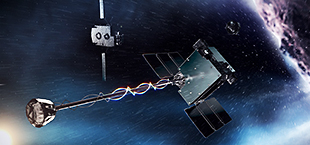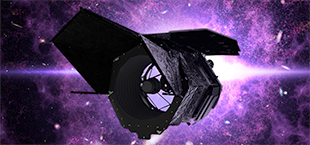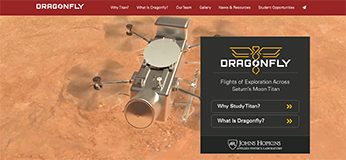Why Titan?
Titan is the largest moon of Saturn and one of the most interesting celestial locations for exploration. Not only is Titan thought to have liquid water below its surface, but methane is thought to form a cycle similar to the water cycle on Earth, where methane forms clouds, rain, and surface fluids that create lakes and oceans. The complex organic matter abundantly present on Titan’s surface provides an ideal environment for studying the conditions necessary for the existence of extraterrestrial life, and for clarifying chemical evolution on Earth before life began.
What is Dragonfly?
Dragonfly is a powered dual-quadcopter with rotary wings that was adopted in 2019 as the fourth mission in NASA’s New Frontiers Program (the middle class for NASA mission categories). Taking advantage of Titan’s thick atmosphere, Dragonfly will make it possible to collect surface material and perform chemical analysis while travelling between geologically diverse sites. This innovative mission concept will explore a variety of sites for the potential of life on Titan, help clarify how life precursors evolve, and search for chemical signatures of (pre-existing) not only aqueous, but also hydrocarbonaceous life.
[Outline and Purpose]
By conducting chemical analysis of atmospheric and surface substances, meteorological observations, and sub-surface exploration at multiple locations using a drone-type rotorcraft, the Dragonfly mission hopes to be able to determine the existence of life precursors and the current environment and evolutionary processes of Titan, which is thought to resemble the environment on the ancient Earth.
The Dragonfly probe is being developed at Johns Hopkins University Applied Physics Laboratory (JHU/APL). As part of the equipment for geophysical measurements and meteorological observations, ISAS/JAXA are developing and providing the seismometer package for investigating the activity of underground quakes on Titan, and exploring the structure of the surface layer and ice crust. CNES (France) and DLR (Germany) are participating in the development of the onboard equipment in addition to universities and research institutes in the US.
[Expected outcome]
Outcome and impact of the project
Dragonfly will be able to collect and analyze samples from geologically different areas by taking advantage of a probe that can take-off, fly, and land in the unique environment of Titan that hosts a thick atmosphere. By moving to a wide variety of locations, the mission will investigate whether there is an environment conducive to life, and how life precursors evolve, in addition to clarifying the existence of any life forms. The icy moon is thought to host an internal ocean which is considered a potential place for life within the Solar System. Investigating the internal structure of Titan will boost knowledge about the interaction and the process of material circulation between the atmosphere, surface layer and sub-surface environment.
Outcome and impact from Japan’s participation
ISAS/JAXA has been developing seismometers as an essential tool to investigate the internal structure of the Moon and planets. Japanese researchers have also been working extensively in the field of icy moons and astrobiology through theoretical studies and laboratory experiments. The Dragonfly mission will therefore be an opportunity to enhance the significance and value of JAXA internationally by demonstrating the results from these research developments.
(Image Credit: NASA/Johns Hopkins APL/Steve Gribben and David Napolillo)
More information on Dragonfly from the Cosmos blog:
https://cosmos.isas.jaxa.jp/measuring-the-waves-through-titan-isas-builds-a-seismometer-for-nasas-dragonfly-mission/

DevelopingDragonfly - Flights of Exploration Across Saturn's Moon Titan
[International partner mission] NASA is planning to explore Saturn’s largest moon, Titan, in order to clarify the moon’s current environment and evolutionary processes. Japan will provide the seismometer for the mission and participate in the scientific research that will involve a drone-type aircraft being used to conduct chemical analysis of the atmospheric and surface materials, meteorological observations, and sub-surface exploration at multiple locations for the first time in history.
 Comet Interceptor - Long period comet exploration mission
Comet Interceptor - Long period comet exploration mission
 Nancy Grace Roman Space Telescope
Nancy Grace Roman Space Telescope

